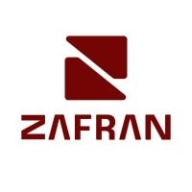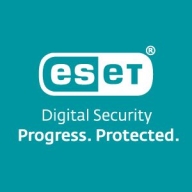


Microsoft Defender for Cloud and ESET Cloud Apps Protection focus on cloud security. Microsoft Defender for Cloud stands out in cost-effectiveness and customer support.
Features: Microsoft Defender for Cloud offers integration with Azure services, threat intelligence, and security recommendations. ESET Cloud Apps Protection provides advanced email security, anti-spam, and phishing protection.
Ease of Deployment and Customer Service: Microsoft Defender for Cloud ensures seamless deployment within Azure with significant support resources. ESET Cloud Apps Protection highlights straightforward deployment with dedicated support.
Pricing and ROI: Microsoft Defender for Cloud is budget-friendly and offers strong ROI integrated within Azure subscriptions. ESET Cloud Apps Protection can be more expensive with higher initial costs but provides exclusive email security benefits.
| Product | Market Share (%) |
|---|---|
| Microsoft Defender for Cloud | 5.3% |
| Zafran Security | 1.1% |
| ESET Cloud Apps Protection | 0.2% |
| Other | 93.4% |


| Company Size | Count |
|---|---|
| Small Business | 26 |
| Midsize Enterprise | 7 |
| Large Enterprise | 45 |
Zafran Security integrates with existing security tools to identify and mitigate vulnerabilities effectively, proving that most critical vulnerabilities are not exploitable, optimizing threat management.
Zafran Security introduces an innovative operating model for managing security threats and vulnerabilities. By leveraging the threat exposure management platform, it pinpoints and prioritizes exploitable vulnerabilities, reducing risk through immediate remediation. This platform enhances your hybrid cloud security by normalizing vulnerability signals and integrating specific IT context data, such as CVE runtime presence and internet asset reachability, into its analysis. No longer reliant on patch windows, Zafran Security allows you to manage risks actively.
What are the key features of Zafran Security?
What benefits can users expect from Zafran Security?
In industries where security is paramount, such as finance and healthcare, Zafran Security provides invaluable protection by ensuring that only exploitable vulnerabilities are addressed. It allows entities to maintain robust security measures while allocating resources efficiently, fitting seamlessly into existing security strategies.
ESET PROTECT Complete offers a complete multilayered protection for endpoints, cloud applications & email, the #1 threat vector.
ESET PROTECT Complete is the ultimate cybersecurity solution that offers top-tier endpoint protection against ransomware and zero-day threats, backed by robust data security measures. It employs a sophisticated multilayered approach that combines multiple cutting-edge technologies to strike the perfect balance between performance optimization, threat detection, and minimizing false positives. With automated malware removal and mediation, it ensures uninterrupted business operations by providing advanced protection for data across general servers, network file storage including OneDrive, and multi-purpose servers. This comprehensive package also features powerful native encryption, enhancing data security to meet stringent compliance regulations.
Microsoft Defender for Cloud is a comprehensive security solution that provides advanced threat protection for cloud workloads. It offers real-time visibility into the security posture of cloud environments, enabling organizations to quickly identify and respond to potential threats. With its advanced machine learning capabilities, Microsoft Defender for Cloud can detect and block sophisticated attacks, including zero-day exploits and fileless malware.
The solution also provides automated remediation capabilities, allowing security teams to quickly and easily respond to security incidents. With Microsoft Defender for Cloud, organizations can ensure the security and compliance of their cloud workloads, while reducing the burden on their security teams.
We monitor all Vulnerability Management reviews to prevent fraudulent reviews and keep review quality high. We do not post reviews by company employees or direct competitors. We validate each review for authenticity via cross-reference with LinkedIn, and personal follow-up with the reviewer when necessary.